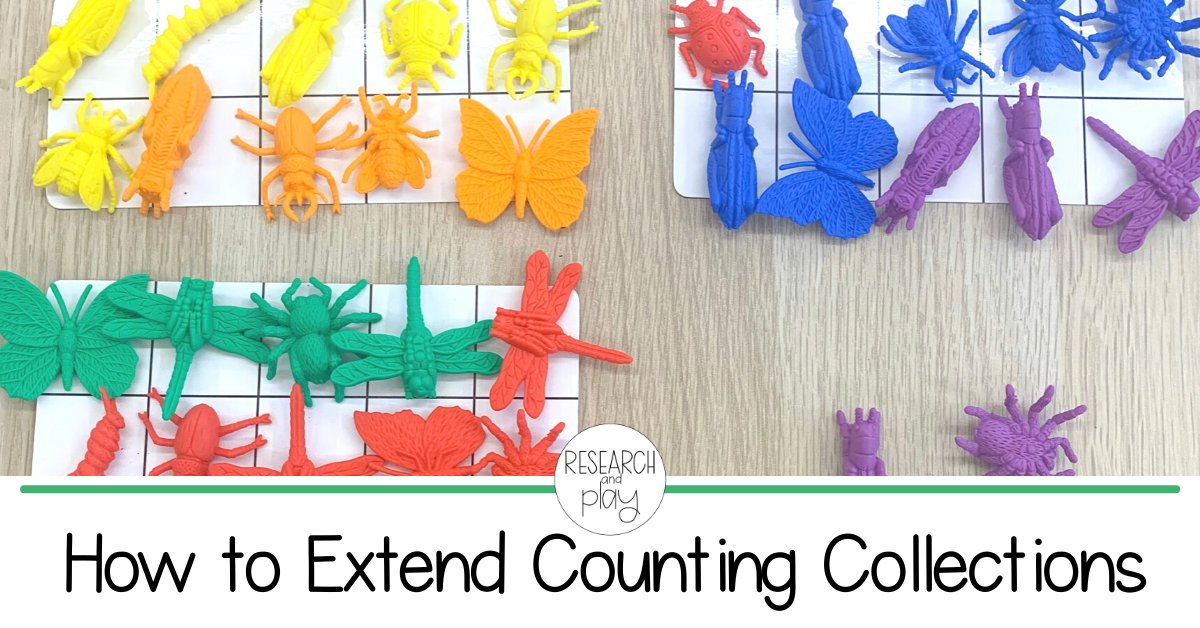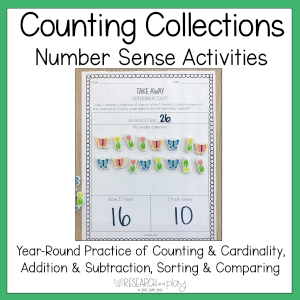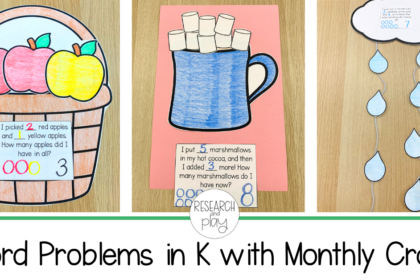A math tool that I have used for the past six years has been one of the most impactful things I’ve brought into my classroom is counting collections! Have you heard of them? I first learned of counting collections during a CGI training I attended one summer. CGI stands for Cognitively Guided Instruction, and the main premise is that students co-construct their math knowledge with the teacher. Using multiple strategies, students are encouraged to “do the math” in a variety of ways and in ways that make sense for them.
You can read more about counting collections in this post and in this book!
After seeing how my students’ number sense developed by using counting collections, I wanted to continue that growth and include other math skills beyond counting and cardinality. There are multiple ways to extend counting collections, which is another reason I love using them! After trying to walk around and manage these extensions, though, I wanted to make something that allowed my students to be more independent in the work. Here are the extension activities, or what we sometimes call games, that my students do after they count their collections!
Look and Count: Subitizing
This extension allows students to practice the counting skill of subitizing. While studies show that subitizing is best used for numbers up to six, I still encourage students to do this activity with whatever amount they grab from their collection. This allows them to work on not only being able to subitize smaller amounts but to also group and skip count. This can be done with any collection of any amount!
Just Keep Counting: Skip Counting, One More, One Less
This extension challenges students to focus on number patterns in their counting. Using the skill of knowing one more or one less, students can use tools like number lines to help them count. They could also use hundred charts to see patterns when counting forward and backward by five and ten. This extension is really useful early in the year when the collections are below 30 to allow students to develop number sense of the trickier teens.
Join Together: Addition
We call this extension a game because you play with a friend! Students combine their collection with a friend, and they work together to add and count their larger collection. There are so many ways that students can approach this task: counting by ones, grouping by tens, using tools like a hundred chart or ten frames, taking turns to count, standard adding, etc. Kids love being able to create a huge (in their eyes!) collection and have the task of counting it. Later in the year, we encourage students to use symbols like + and = to show how their collections were joined together.
Take Away: Subtraction
Another game we play is take away, which is an open-ended way to practice subtraction! This game is super simple and can be played individually or in pairs. I like to coach students with this extension, as I do with every extension activity, to make sure they understand how to solve their take away mystery. When students have their starting group, their collection, they take away an unknown amount by closing their eyes and hiding some objects in their collection. They see how many they have left, and then they solve for the unknown!
Sort It Out: Sorting, Categorizing, Comparing
I like adding this extension early in the year but make sure to bring it back periodically throughout the year as students are able to sort in multiple ways. This extension has students sorting their collection by color, size, type, shape, and amount. This is such an interesting extension activity to observe since students sort so creatively! It’s easy to differentiate and challenge students after they sort just by asking them to sort another way. This extension can help students with the actual count the next time they get that collection by showing them a way to organize the collection.
Roll and Count: Counting On
We love any chance to use dice, so this extension is always a popular one! If you’re looking for a way to have students practice counting on, which can be a tricky skill to teach, this activity uses dice to allow students to count on from their collection amount. Since students can get a different amount each time they choose a collection, this activity can support counting from smaller teen numbers to larger numbers beyond 30.
Want to see more?
In addition to these extension activities, I also wanted to give students some tools to support them in their initial count. They can access a hundred chart for help with one-to-one correspondence and cardinality, a sorting by tens mat and sorting by fives mat to support with grouping and counting, and a recording sheet with circles to support students who need to work on counting accurately.
If you think you’re students would enjoy these extension activities, click here or on the picture below to get your copy of all of these math tools!





